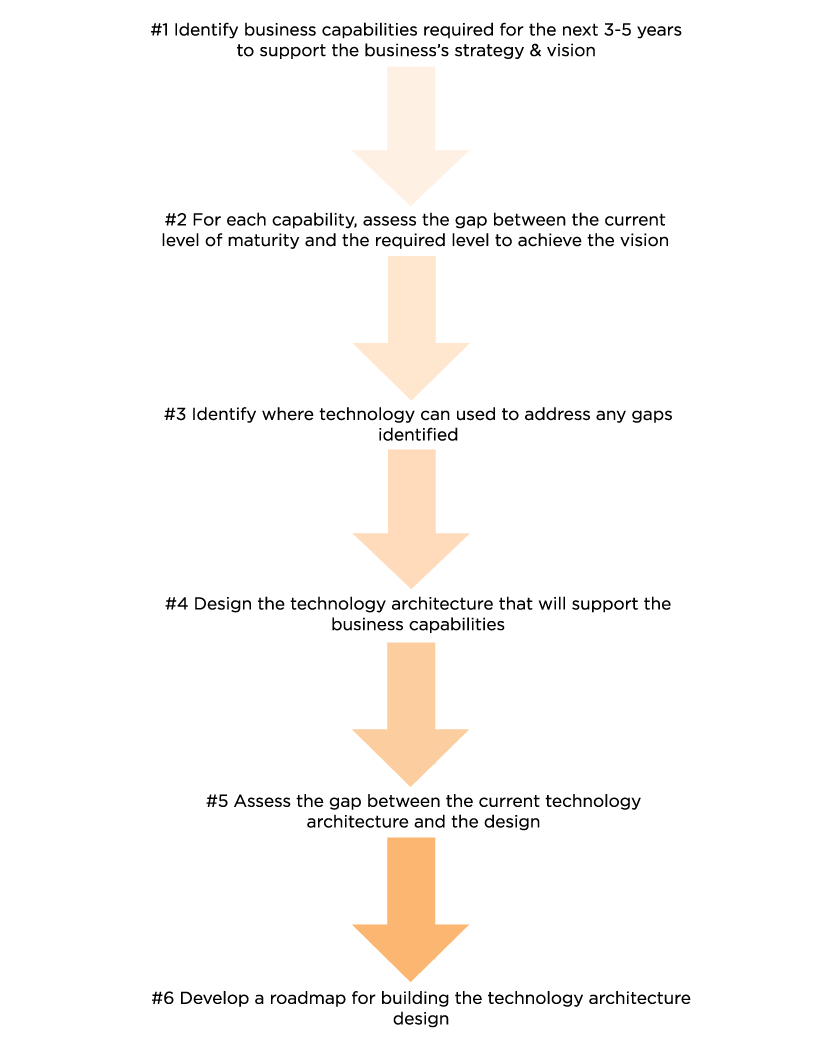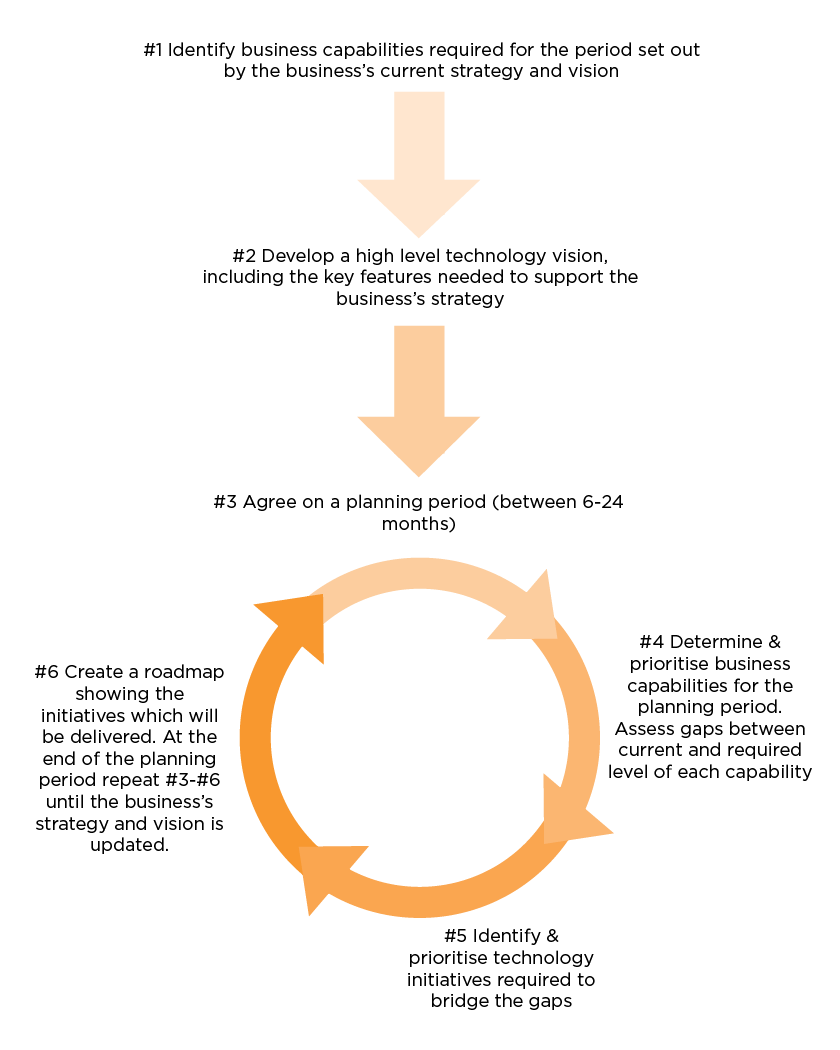Blog
How to create an effective IT strategy
July 24th, 2017
What is a traditional IT strategy?
This is usually a structured and ordered process which produces a long-term view of the business’s technology requirements and a plan for meeting these needs. A traditional IT strategy will usually plan ahead for the next three to five years and begin by identifying what business capabilities will be required over this time period to achieve the business’s vision. This is then followed by a gap analysis to assess the difference between the business’s current maturity and the level required to realise the vision.
The focus then shifts to technology; identifying how it can be used to address the gaps highlighted by analysis, and designing the target technology architecture to support the required capabilities. An assessment will need to be carried out see if there any gaps between the current technology architecture and the target one, and then a roadmap can be created to address these gaps. The roadmap should be prioritised in terms of what technology architecture is most vital for achieving the business’s vision.

With this approach, the IT Director and CIO may not be as involved with the initial steps, but this depends on the business’s approach to IT. Ideally, though, you want to have IT personnel involved at every stage of the strategic planning to prevent potentially disastrous misalignment.
The downside to the traditional approach is that because its focus on the long-term can actually be limiting because it does not allow the business to respond to changes in the marketplace. This is especially true if the technology roadmap is too strictly adhered to, as you run the risk of the technology strategy deviating from the business’s needs, which will naturally evolve over time.
What is an agile IT strategy?
An agile strategy is similar to a traditional strategy in the sense of the steps it follows. However, rather than planning for years ahead it focuses on the “short-term”, laying out the technology strategy for the next 6-24 months. The time period the strategy will cover depends on how stable the market the company operate in, for example, those operating in fast-changing markets may need to work on a 6-12 month horizon whereas those who are in more stable markets may select as 12-24 month planning period.

Once the planning period has been agreed upon, then the leadership team must agree on which business capabilities will take priority and identify the technology initiatives required to bridge the gap between the current and required level of each capability.
A roadmap should layout which initiatives will be delivered during the planning period, at the end of which the business can evaluate and adjust. Identifying new business priorities and the technology initiatives required to support them.
This cycle should continue until the original strategy and vision for the business are updated, at which point the strategic planning should start from the very beginning.
This approach is often preferred because it suits the fast-changing nature of the digital world and provides businesses with the flexibility to adapt to new challenges and opportunities. It may particularly suit those businesses whose strategy and technology needs change rapidly and, therefore, require a technology strategy which can flex with these changes.
Do you need to have an IT strategy?
In some circumstances, it may not make sense to have a separate IT strategy. This is usually where technology forms the basis of a new technology model or is used as the starting point to develop completely new products and/or services.
In these cases, because the business strategy will be based on technology, some argue there is no need for a separate IT strategy. The CIO and IT Director will have key roles in defining the strategy, something which does not always happen with a traditional approach.
For this approach to be successful it depends on the IT function maintaining and developing the key architecture to support the business strategy and to shape and guide technology decisions.
What is the right IT strategy for my business?
Just as IT support does not have to be 100% in-house or a 100% outsourced, these three approaches to IT strategy are not mutually exclusive. A combination of approaches may be required to best meet the needs of your business, this usually depends on the role technology plays within your organisation and the level of agility you require to remain competitive in your market.
Whichever approach you decide it is vital that IT personnel are involved with every step, as technology will certainly play an important role in building and shaping the required capabilities.
The right approach may also change over time as your priorities change, your vision develops and you find yourself facing new challenges within the marketplace.
What is cloud email archiving?
Cloud email archiving is the process of storing a log of all email communications on a cloud storage platform. This enables businesses to have a secure, long term way to store emails for either legal, regulatory or documentation reasons. The main benefits of a cloud email archiving solution are that it reduces the costs of […]
Are state-sponsored cyber-attacks a serious threat to your businesses?
The notion that a country’s military cyber-division has your business in their crosshairs for a cyber-attack feels ridiculous. Firstly, what could your business have possibly done to warrant such an attack and secondly, why would your business be a target? Why do state-sponsored cyber-attacks target businesses? A state-sponsored attack usually has one of three objectives: […]
FAQ: What are DDoS attacks?
What is a DDoS attack? Distributed Denial of Service (DDoS) attacks are a form of cyberattack that aims to disrupt access to a service (such as a website) in order to extort the owner or to serve as a distraction whilst another attack occurs. DDoS attacks are usually driven by a botnet (a network of […]

